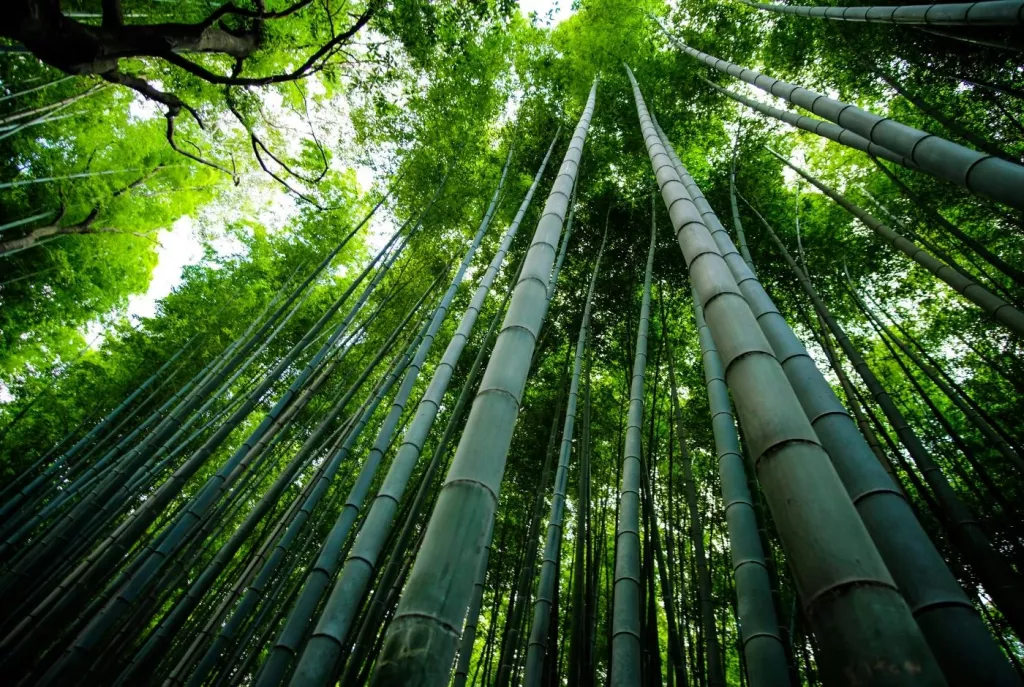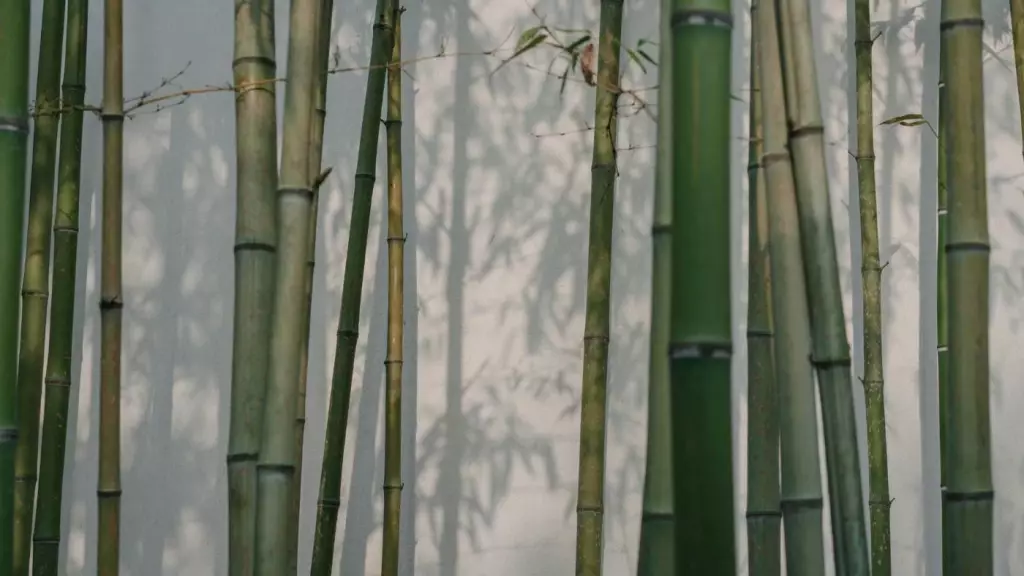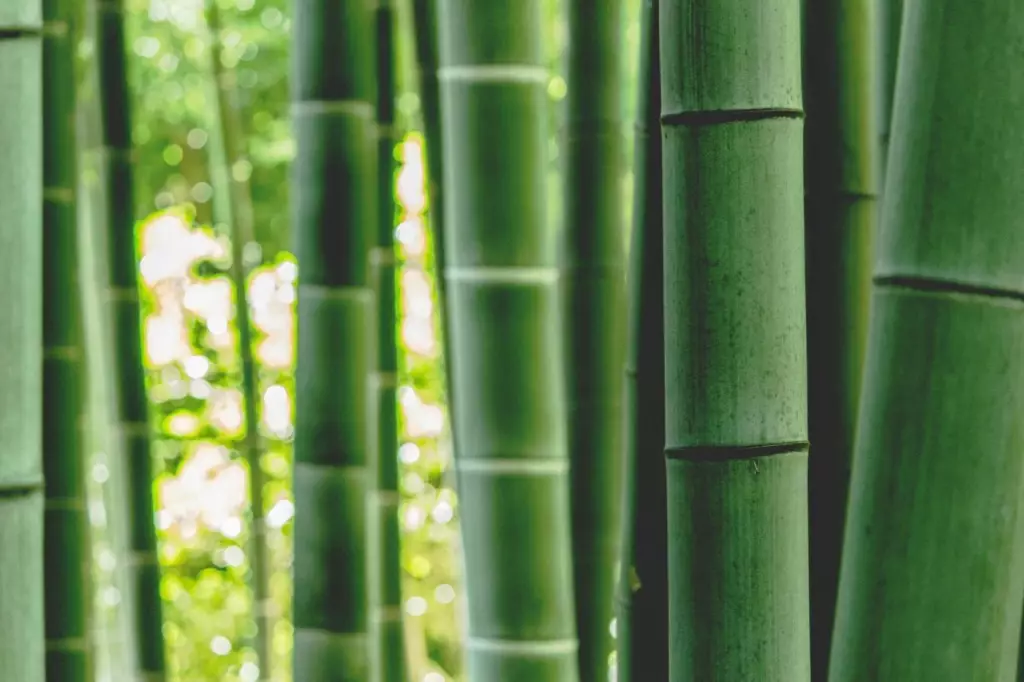How Often Should You Fertilize Bamboo? (Less Than You Think)
Bamboo requires less fertilizer than many gardeners assume. The optimal fertilization frequency for bamboo hinges on its growth phase and the specific variety, but a general guideline suggests a modest application is sufficient. In this article, we will delve into the specific care requirements of bamboo, focusing on its fertilization needs.
Bamboo requires less fertilization than many plants. It's generally recommended to fertilize mature bamboo once a year in the spring. For younger or potted bamboo, fertilizing 2–3 times a year with a balanced fertilizer is sufficient.
Over-fertilization can harm bamboo, emphasizing the "less is more" approach. Let's take a closer look at the signs of an overfertilized bamboo plant.
Summary
- Fertilizing during the growing season, specifically in early spring and early summer, aligns with bamboo's active growth phase, allowing it to utilize the nutrients efficiently.
- Over-fertilization can harm the plant, indicating that moderation is crucial, with generally only one to two applications per year being necessary.
- A balanced fertilizer, containing equal parts nitrogen, phosphorus, and potassium, is recommended for bamboo.

On this page:
- Ideal Fertilization Frequency for Optimal Growth of Bamboo
- Seasonal Considerations in Fertilizing Bamboo
- Monitoring and Adjusting Fertilization Routines
- What Is a Good Fertilizer for Bamboo?
- Bamboo Fertilization Techniques and Tips
- When Should I Fertilize My Bamboo?
- Can You Over Fertilize Bamboo?
- Outdoor Bamboo Fertilizer
- Clumping Bamboo Fertilizer
Ideal Fertilization Frequency for Optimal Growth of Bamboo
When it comes to fertilizing your bamboo, timing and moderation are key. During the growing season, typically spring and early summer, is when you should apply fertilizer. This period of active growth is when bamboo can best utilize the extra nutrients.
You might think more frequent fertilization equals better growth, but that's not the case with bamboo. Fertilizing once or twice a year should suffice. Too much can actually do more harm than good, leading to fertilizer burn or excessive foliage at the expense of the culms.

A balanced fertilizer with equal parts nitrogen, phosphorus, and potassium is your go-to choice. Nitrogen is crucial as it supports lush leaf development. However, be cautious with the amount; a high nitrogen content can promote rapid growth that weakens the bamboo over time.
Here’s a simple frequency guide:
- Early spring: Apply fertilizer to kick-start growth.
- Early summer: Consider a second application if growth seems sluggish.
Remember, the exact frequency may vary based on your specific climate and soil conditions. You can monitor how your bamboo responds after fertilization and adjust accordingly. Stick to the essentials and your bamboo will thank you with robust growth and health.
Seasonal Considerations in Fertilizing Bamboo
To support your bamboo's health throughout the year, understanding the seasonal needs for fertilizing is crucial. Each season presents unique conditions affecting how you should approach this essential aspect of bamboo care.
| Season | Fertilizing Frequency and Type |
|---|---|
| Spring | Apply a high-nitrogen, slow-release fertilizer in early spring. |
| Summer | Use a balanced fertilizer and ensure adequate watering. |
| Fall | Switch to a fertilizer with potassium and phosphorus. Avoid late-season fertilization. |
| Winter | Do not fertilize; focus on protection from cold weather. |
Spring care for your bamboo plant
As new shoots emerge in early spring, your bamboo plant enters a period of vigorous growth. This is the prime time to apply a fertilizer that's high in nitrogen, which supports the quick development of greenery.
In spring, stick to a balanced slow-release fertilizer to encourage a lush and thriving plant.
Summer nourishment for your bamboo plants
During summer, your bamboo plants will benefit from a topdressing of compost or a balanced fertilizer again to sustain their healthy growth.
Since this season can be hot and dry, ensure your bamboo receives adequate watering following fertilization to avoid burning the roots and to promote nutrient absorption.
Fertilizing bamboo in fall
In fall, it's wise to switch to a fertilizer that includes potassium and phosphorus to strengthen your bamboo against the cold months ahead.
You can also add a layer of mulch to protect the roots, but remember that fertilizing late in the season should be avoided to prevent new growth that won't survive the winter.

Considerations when nourishing bamboo plants in winter
Winter months typically signal a dormant period for bamboo plants, so hold off on fertilizing during this time.
The climate can often be too harsh for new growth, and fertilization could lead to yellow leaves or a weakened environment for your bamboo. Instead, focus on protecting your plants from cold weather and wait for spring to fertilize again.
Monitoring and Adjusting Fertilization Routines
When tending to your bamboo, keeping an eye on its overall health is crucial for determining when to adjust your fertilization routine.
Look for signs of nutrient deficiencies, like yellowing leaves or slow growth, as indicators that your bamboo may need more nutrients. If you notice these signs, it’s time to increase the frequency of fertilization.
Conversely, if your bamboo is growing too vigorously or the foliage appears unusually dark green, it could be a sign of too much fertilizer. In such cases, reducing the frequency of your applications is necessary.
Remember, it's better to underfeed than overfeed, as excess fertilizer can cause root burn and other issues.
Here’s a quick checklist to help you maintain the right balance:
- Early spring: Check bamboo growth; fertilize if new shoots appear.
- Summer: Monitor foliage; apply a second round of fertilizer for continued health.
- Fall to winter: Reduce or stop fertilizing as bamboo growth slows down.
Nutrient levels:
- Nitrogen: Vital for leaf growth (look for a fertilizer containing about 20% nitrogen).
- Phosphorus: Supports root development.
- Potassium: Essential for overall plant wellness.
Adjusting your fertilization approach isn’t just about the calendar or the nutrient content; it's also about your bamboo's response to the care you provide.
By staying attentive and responsive, you'll ensure your bamboo remains healthy and vibrant year-round and can help boost bamboo production as well.
What Is a Good Fertilizer for Bamboo?
When you select a fertilizer for your bamboo, perhaps consider the NPK ratio, which stands for nitrogen (N), phosphorus (P), and potassium (K).
Bamboo thrives on high-nitrogen fertilizers because nitrogen is essential for their lush growth. It's one of the secrets to making your bamboo grow faster.
| Type of Fertilizer | Source | Effectiveness on Bamboo |
|---|---|---|
| Organic fertilizers | Compost, manure, bone meal, and other natural materials | ★★★★★ |
| Chemical fertilizers | Manufactured minerals and compounds | ★★★ |
| Slow-release chemical fertilizers | Coated or specially formulated synthetic materials | ★★★★ |
Organic fertilizers are ideal for bamboo
Organic fertilizers are derived from natural materials such as compost, manure, bone meal, and other organic matter.
These fertilizers are not only beneficial for providing essential nutrients to plants but also enhance the soil's structure and its ability to retain water and nutrients.

However, the nutrient content of organic fertilizers can vary, making it necessary sometimes to test soil and adjust applications accordingly. They may also act more slowly than chemical options, requiring patience for visible results.
Chemical fertilizers can offer a quick nutrient boost for bamboo
Chemical or synthetic fertilizers are manufactured products designed to supply plants with readily available nutrients.
They can be formulated to have specific NPK (nitrogen, phosphorus, potassium) ratios tailored to the needs of particular plants, including bamboo.
The main drawbacks include the potential for over-fertilization, which can harm plant roots and disrupt soil microbe activity. Long-term use can lead to soil degradation and increased salinity, potentially harming the bamboo's root system.
Slow-release chemical fertilizers can minimize over-fertilization risks
Slow-release chemical fertilizers are a type of synthetic fertilizer engineered to release nutrients gradually over time. This can be achieved through the use of coated granules or specialized formulations that break down slowly.
While they offer many of the benefits of organic fertilizers with fewer downsides than traditional chemical fertilizers, slow-release options can be more expensive upfront.
However, their efficiency and lower risk of damage to plants can make them a cost-effective choice in the long run. Fertilizer is one of the ongoing costs in planting an acre of bamboo.
Bamboo Fertilization Techniques and Tips
Choose the best fertilizer
- Look for a fertilizer with a high Nitrogen (N) content, essential for vibrant foliage.
- Use granules or fertilizer spikes for a slow release of nutrients.
- Always follow the label's directions to apply the correct amount.
Application tips
- Avoid over-fertilizing: Applying too much fertilizer can cause stunted growth, yellowing leaves, or other damage.
- For granules: Sprinkle evenly around the plant’s drip line.
- For spikes: Position them evenly around the plant, especially in potted plants.
- Timing: Do not fertilize in late summer to prevent weak stems.
Identify issues
- Brown tips on leaves: This may indicate overwatering or over-fertilizing.
Additional supplements
- For strong culms and vibrant foliage: Consider using seaweed extracts or a balanced fertilizer with magnesium and trace elements to meet nutritional needs without the risks associated with chemical fertilizers.
When Should I Fertilize My Bamboo?
Fertilizing your bamboo is less frequent than you might expect. It’s key to time the fertilization correctly so your bamboo thrives.
Fertilize during spring and summer
These are the optimal times to fertilize your bamboo. Bamboo experiences active growth during these warmer months.
- Spring (March to May): Start as new growth appears.
- Early summer (June to July): Support continued growth.

Dosages and application: Be attentive to not over-fertilize, as too much can harm rather than help your bamboo. Using too much fertilizer can cause damage to the roots or stunt growth.
Do not fertilize during winter
Remember, bamboo goes dormant in the winter months. During this time, there is no need to fertilize as the plant isn't actively growing.
Can You Over Fertilize Bamboo?
You can certainly over-fertilize bamboo, but it's essential to avoid doing so. Too much fertilizer can be detrimental to your bamboo's health. By being cautious, you can ensure that your bamboo thrives without harm.
Signs of over-fertilization
- Root burn
- Stunted growth
- Leaf yellowing
Tips to prevent overfertilization
- Moderation: Use fertilizer sparingly, following the manufacturer's instructions.
- Timing: Fertilize only during the growing season, typically spring and summer.
- Type: Choose a fertilizer with a balanced NPK ratio, suitable for bamboo.
If you see signs of distress in your bamboo, such as burned roots or slowed growth, you might be applying too much fertilizer.
It's better to err on the side of less than to risk the health of your bamboo with too much. Bamboo generally requires less fertilizer than other garden plants, so don't treat it the same as the rest of your garden.
Outdoor Bamboo Fertilizer
When fertilizing your outdoor bamboo, try to choose a formula that supports its growth needs. Ideally, bamboo benefits from a fertilizer with a higher nitrogen content.
A good guideline is choosing a ratio close to 20 percent nitrogen, especially during its growing periods in spring and early summer.
For application, sprinkle about 2 pounds per 100 square feet. It's best to apply the fertilizer when the soil is moist and bamboo is actively growing, ensuring the nutrients are effectively absorbed.
Remember, over-fertilization can damage the plant, leading to excessive growth or root burn, so always follow the recommended amounts.
Here's a seasonal guide for your bamboo's nutritional needs:
- Spring: Apply a slow-release, high-nitrogen fertilizer to support the growth surge.
- Early Summer: A second application sustains the growth period.
- Fall and Winter: Refrain from fertilizing as bamboo growth slows and can enter dormancy.
Your bamboo will show appreciation for your care with vibrant foliage and resilient stalks. Remember to water the plant after fertilizing to aid in nutrient uptake and prevent root burn.
Clumping Bamboo Fertilizer
When you're looking to feed your clumping bamboo, simplicity is key. Your bamboo doesn't need as much fertilizer as you might think.
Feeding your bamboo should be a measured approach, ideally two to three times per year to foster healthy growth.
During the growing season, your clumping bamboo benefits the most from feeding. The spring is crucial, as one feeding during this time can greatly benefit your plants. It's advisable to skip winter fertilization since bamboo enters dormancy then.
Amounts and types of fertilizer
- Organic fertilizers: More generous amounts are required due to lower nitrogen.
- Chemical fertilizers: Use sparingly to avoid root burn and rapid, weak shoot growth.
Application tips
- Apply when soil is moist.
- Avoid fertilizing during drought conditions to prevent fertilizer burn.
- Mulching after fertilizing helps retain moisture and nutrients.
Remember, your clumping bamboo will thrive with the correct care and feeding routine, without the need for frequent fertilizer applications.



